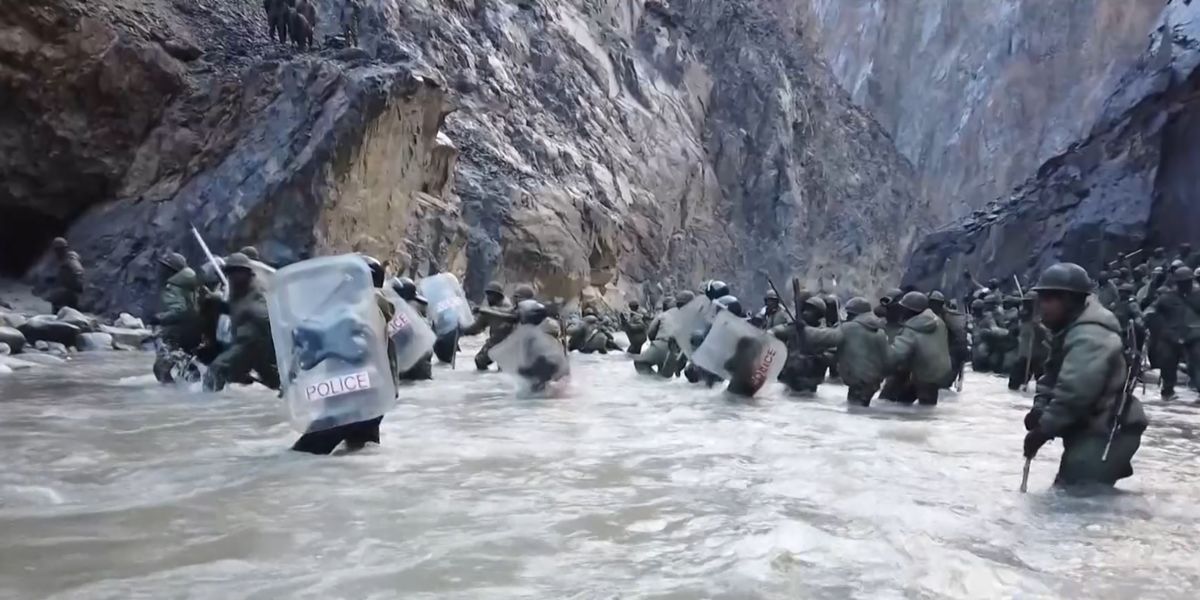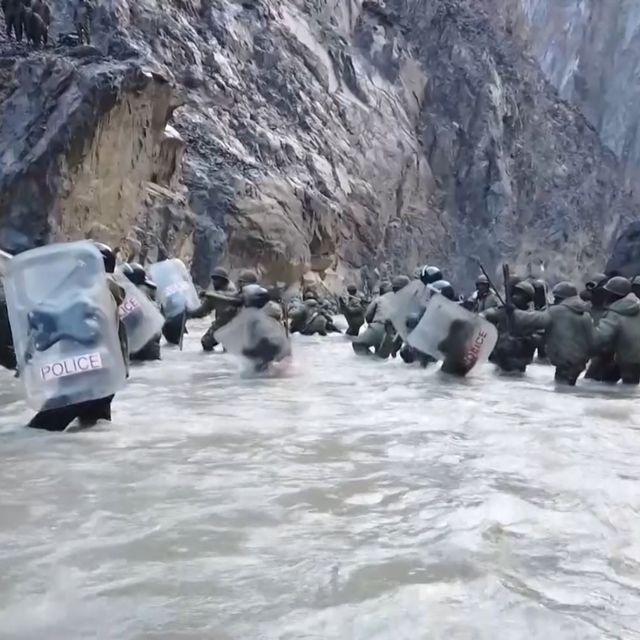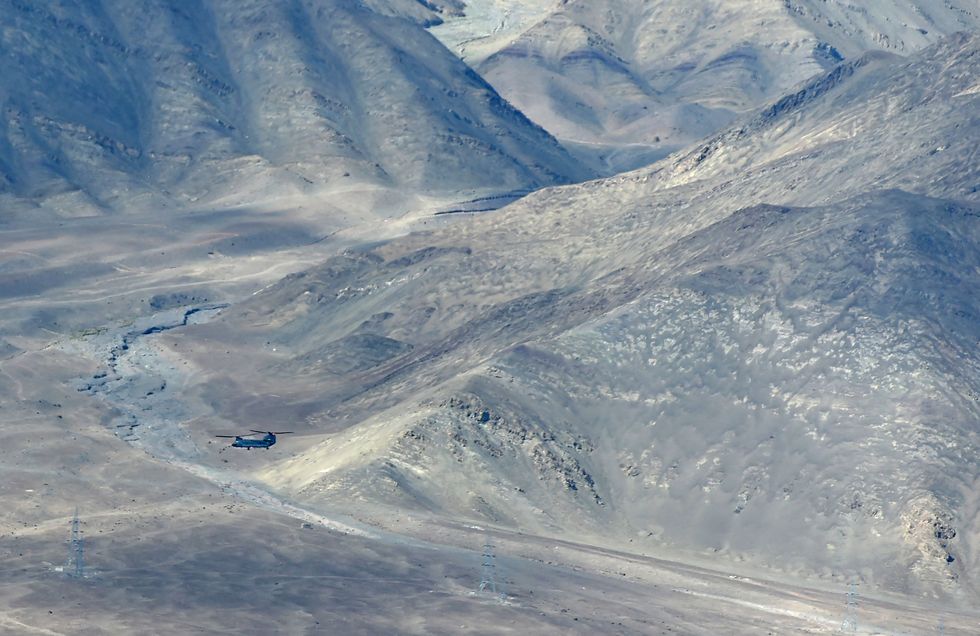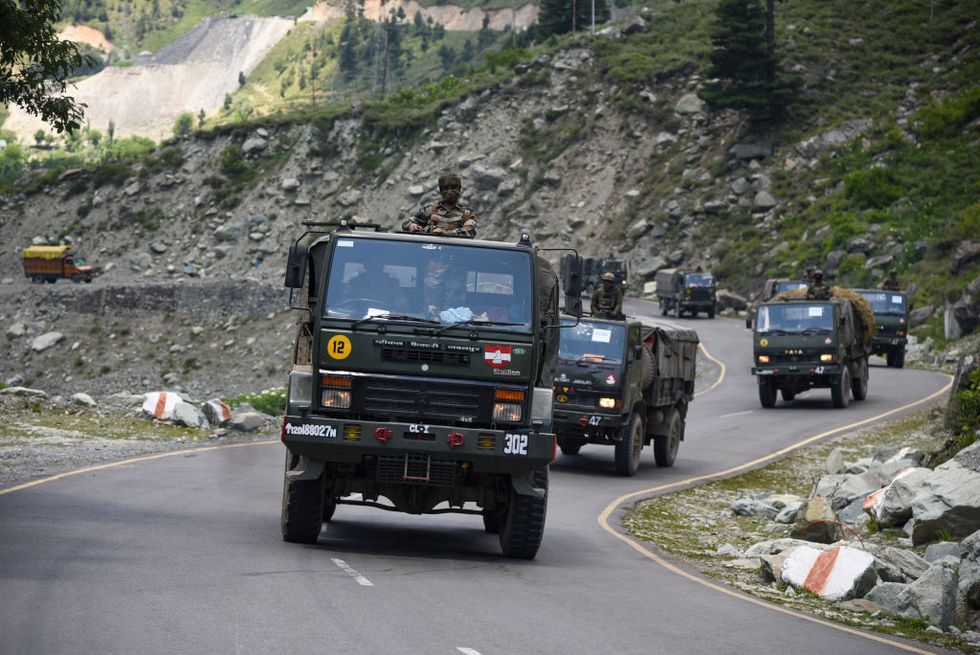
Why Medieval Melee Weapons Star in a Border Dispute Between China and India
“Clubs embedded with nails and wrapped in barbed wire” are just one type of weapon in use at the most dangerous border in the world.
“Clubs embedded with nails and wrapped in barbed wire” are just one type of weapon in use at the most dangerous border in the world.
BY KYLE MIZOKAMIPUBLISHED: AUG 14, 2023
SAVE ARTICLE

CCTV//Getty Images
- A border dispute between China and India could turn hot again as both sides are building up forces.
- Chinese and Indian troops brawled twice in the last four years, killing 24 and injuring dozens more.
- An agreement to prohibit guns has resulted in both sides carrying medieval-style weapons.
One of the most desolate and lonely places in the world is also becoming the most dangerous. In Aksai Chin, on the border between China and India, the respective countries’ troops have squared off repeatedly in an on-and-off border dispute that began in the mid-20th century. In a twist, though, the modern fighting between the two nations relies on rocks, fists, and clubs instead of tanks, warships, and fighter jets.
The fighting has cooled off over the past year or two, but the possibility of these skirmishes leading to all-out war is still on the table. Meanwhile, the specter of the ultimate weapons—nuclear weapons—looms over what is, for all intents and purposes, a medieval battlefield.
The World’s Most Dangerous Border

An Indian Air Force Chinook helicopter flies over Leh, the joint capital of the union territory of Ladakh, on June 25, 2020. India claims the Aksai Chin as part of Ladakh.
Getty Images
China and India share a 2,100-mile-long border, which is slightly longer than the distance between Los Angeles and Chicago. There is no actual mutually agreed upon border between the two sides, with both New Delhi and Beijing promoting competing claims.
The main point of contention is the Aksai Chin, a vast desert wedged between the Kunlun and Karakoram mountains, and located three miles above sea level. Dry and generally inhospitable to human life, the region has little economic importance. Aksai Chin also features steep mountains, many far above the timberline, with lakes, streams, and narrow roads cut along mountainsides and through mountain passes.Aksai Chin’s importance is entirely political; China claims it as part of Xinjiang, its westernmost territory, while India claims it as part of the Ladakh union territory. Because both sides make competing claims, there is no generally agreed upon border, only a Line of Actual Control that marks the general status quo, manned and patrolled by soldiers of both sides. Despite the danger of two nuclear-armed powers having a mutually agreeable border, it seems unlikely the issue will be solved any time soon.
No Shooting at 16,000 Feet

An Indian Army convoy rolls toward Ladakh after the Galwan Valley class, June 2020.
Getty Images
In 1996, China and India agreed to a set of rules that governed how troops from both countries could act along the Line of Control. The agreement states that “neither side shall use or threaten to use force against the other by any means or seek unilateral military superiority.” More specifically, it says:
The provision that neither side shall “open fire” is a de facto ban on using firearms at the Line of Control. Soldiers on both sides have service rifles, but their actual use is prohibited by the agreement. This has likely proved useful in preventing escalations at the border, but it’s had an unexpected consequence: both sides have loaded up their troops with handheld melee weapons that wouldn’t be out of place in a fight thousands of years ago.Neither side shall open fire, cause bio-degradation, use hazardous chemicals, conduct blast operations or hunt with guns or explosives within two kilometers from the line of actual control.
Rumble in the Valley
In May 2020, Indian troops entered the Galwan Valley to make sure that Chinese troops had vacated the area, something both sides had agreed to the previous month. The People’s Liberation Army detachment was still there and in the process of building a new structure, leading to a heated argument between the two sides. The Chinese soldiers eventually left the area.
hundreds of reinforcements. Chinese and Indian troops fought four hours in hand-to-hand combat, with Chinese soldiers throwing rocks and using “clubs embedded with nails and wrapped in barbed wire,” as The Wall Street Journal reported in 2020. Meanwhile, Indian troops outfitted themselves with iron rods and batons. At least 20 Indian troops died, up to 17 by exposure to the elements, and another 76 were injured. At least four Chinese soldiers died, and an unknown number were injured. Several Chinese and Indian troops were pushed or fell from cliffs into the Galwan River.
Indian state media later suggested the fighting was premeditated, and that China had sent “mountain climbers and martial arts experts” to reinforce the troops at the border.Round Two?

India’s Agni-V nuclear-armed intermediate-range ballistic missile has a range of 5,000 kilometers, making it capable of hitting most of China.
Getty Images
Aside from a handful of reported gunshots on the border and a brief skirmish in 2021, the region has been relatively calm. Outside observers worry, however, that this is merely the calm before the storm: satellite imagery has detected a buildup of military infrastructure on both sides, particularly the Chinese side. According to a recent Chatham House report, China has built “expanded roads, outposts, and modern weatherproof camps equipped with amenities such as parking areas, solar panels, and helipads.”
Could fighting break out again and lead to all-out war? The two sides fought a brief war in 1962, but that was before India possessed nuclear weapons. Today, China has an estimated 410 nuclear weapons and India has 164. While it would take a considerable amount of escalation on the ground to lead to a nuclear exchange between the two countries, it’s always a possible outcome when a conflict takes place between two nuclear-armed states. The fact that neither side has used firearms to injure and kill the other means both sides, down to the lowest level of command, understand this.

